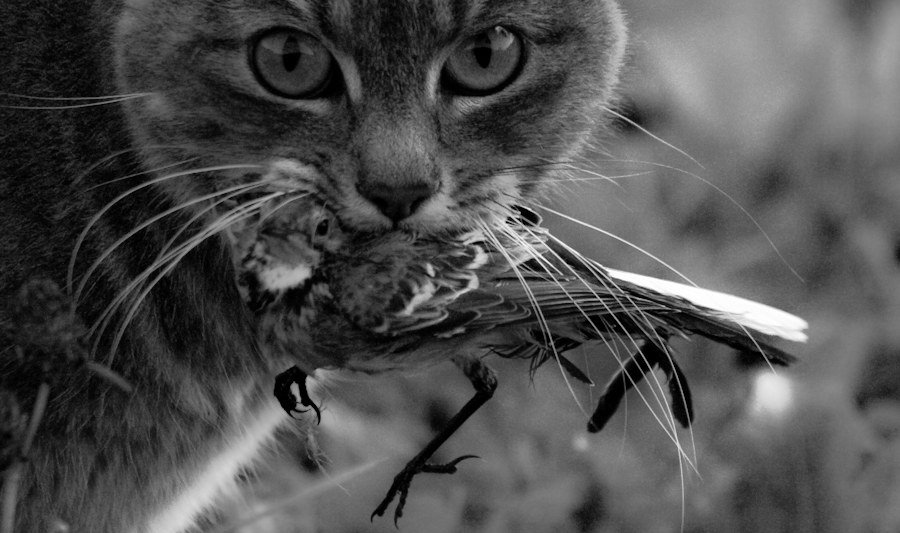
The other day, Minneapolis, Minnesota passed a feral cat ordinance. This got me wondering what other cities were doing. So I put together a “carnival” (of sorts) of Feral Cat Ordinances and Issues that samples current events across the US.
Let’s start with Minneapolis, because that is what sparked my interest. From the Star Tribune:
Feral cats win a round at Minneapolis City Hall
…a City Council committee voted 5-0 to recommend a new law that in essence licenses the care and feeding of free-roaming cats as part of a larger effort to reduce their numbers. …
The ordinance would allow Minneapolis residents to establish cat “colonies” where abandoned and wild cats can be fed but also vaccinated, neutered and identified in an effort to humanely cut their population and control disease. Nonprofit pet protection groups would manage the program and be responsible for ensuring that cat caretakers take the required steps.
The problem of free-roaming cats — and their predation on birds and other wildlife — is hotly contested in communities across the country, and it triggered a lively exchange in the hearing room. Several members of the Audubon Society said the plan fails to answer questions about how cats will be managed and what rights neighbors will have if the cats become a nuisance. The ordinance requires caretakers to “educate” people in their neighborhoods.
… Matthew Anderson [of Audubon] said proponents of colonies are putting the interests of one invasive species — cats — over the hundreds of other native ones that are their prey.
But about two-thirds of the people speaking supported the new measure, including Dan Niziolek, director of Minneapolis Animal Care and Control. … he said after the hearing, is that it’s a community problem being addressed by members of the community. “Does it solve it? No,” he said. “But it’s something in the right direction.”
Council Member Betsy Hodges echoed the same sentiment as she voted in favor of the ordinance. She said she has a cat that stays indoors — unwillingly. And she has a North American bird book that has so far taught her how to recognize a sparrow. … “I understand the objection,” she said. “But I don’t want to do nothing.”
I will add this to the story from Minneapolis. Minneapolis has a history of taking on projects that originally sounded ike good ideas, were tried elsewhere, failed, tried again at a different location, failed less, tried again at a new location, kinda worked, then making the idea work in the end. For example, Minneapolis has a bike borrowing program (an idea originally tried in Amsterdam many years ago) that actually works. So, maybe, no matter what one’s opinion may be of this idea of feral cat colonies, it can work here. What would success look like? Well, it would not look like a bunch of cats, that’s for sure.
The disquieting thing about this measure in Minneapolis which is almost guaranteed to become law, is the idea that “community” is more important than “finding the correct answer.” Home rule rules again, perhaps poorly.
Meanwhile, in Holyoke Massachusetts, the council had a ban on cat feeding in mind but others … the community … objected. Eventually a pro-feeding ordinance was introduced and passed.
Feral cats OK to feed – within limits – under Holyoke City Council committee recommendation
In a measure some officials said will be unenforceable, a City Council committee voted 4-0 on Tuesday to recommend a rule that anyone feeding four or more feral cats get permission from the Board of Health.
The latest step in an issue that has featured sign-holding cat lovers and some officials urging an outright ban on the feeding of feral cats came in a two-hour meeting at City Hall that some councilors criticized as confusing.
…anyone who wants to be legal in the city’s eyes while feeding four or more feral cats would have to enroll with the city. The practice they would have to abide by is known as “trap, neuter and release,” and it would be under Board of Health regulation. … someone who is feeding feral cats would trap them, get them neutered or spayed, and possibly vaccinated against rabies and other diseases, and return them to the outdoors.
Health Director Daniel B. Bresnahan said trapping cats is difficult enough. How his office will be able to determine whether someone is feeding three cats or five times that is unclear, he said.
“Is he going to lie to me? Am I supposed to scout his property? It’s not going to be impossible, but it’s going to be hard,” Bresnahan said.
…
“It’s not the best, but I think it can work,” committee Chairman Diosdado Lopez said.
…
Councilor Kevin A. Jourdain questioned whether feral cats is a big enough problem requiring its own ordinance.
“It seems like we’re making a mountain out of a mole hill,” Jourdain said.
…
William J. Moriarty, of Willow Street, which is one of the areas cited as having a feral-cat problem, criticized councilors for failing to allow public comment during the meeting.
“First Amendment rights are in question here,” Moriarty said.
First amendment rights? What about second amendment rights?!!?? Anyway I just hope they are prepared to handle the next big problem that will come to Holyoke with a warming climate. Mole hills!
New Jersey is Undecided
New Jersey has an interesting approach, at the sate level. There is a document on the web site of the state department of health pertaining to feral cats:
The Department of Health does not endorse or oppose the concept of establishing properly managed cat colonies utilizing trap-neuter-return (TNR) techniques. However, if a municipality wishes to allow cat colonies, they should develop standards through ordinances for the proper and managed operation of such colonies, based on the guidelines below, that would provide accountability and oversight by the health officer and animal control officer.
Cats are domesticated animals that are not indigenous wildlife in North America. … Feral animals are domestic animal species living in an unsocialized or wild state; they are one or more generations removed from a home environment….
“Free-roaming” cats are those that are not necessarily considered to be feral, but which frequently roam outdoors and interact with feral cats and wildlife. They may be “outdoor cats” with a specific owner, stray pets, feral, or may have originated in one household and are now fed or cared for by other households in the neighborhood.
…It is estimated that the number of free-roaming cats in the United States may be equal to that of owned cats, approximately 70 million. If left unchecked, free-roaming cats will breed and their populations increase at locations where they find suitable shelter and food, resulting in environmental/property damage, and public nuisance. Free-roaming cats will hunt and kill birds, small mammals, reptiles, amphibians and fish, resulting in wildlife mortality.
West Hollywood…
Where former cat stars of the silver screen are more likely to be spotted than anywhere else (especially if its name is “baby”) the city manager can …
…order that the feral cat colony be maintained in compliance with specified conditions designed to eradicate the conditions as to which substantial evidence was produced from the investigation and/or the hearing. In the latter event, the Manager shall allow the colony to remain in place only as long as he/she finds that the subject property is suitable with reference to its size and location for maintaining, harboring or keeping a feral cat colony; the feral cat colony can be maintained on the property without creating a condition detrimental to the public health, safety or welfare; and the feral cat colony custodian possesses the necessary qualifications to maintain a feral cat colony in compliance with all applicable ordinances, conditions and laws.
In Copperas Cove, Texas ..
There is a petition to reverse the anti-feral cat policy. The petition site says:
The City Council in Copperas Cove, Texas, amended an animal control ordinance- attempting to stop trap, neuter and release programs for feral cats in the city. The ordinance seeks forbid such activities from taking place, such as releasing a spayed feral cat within the city limits and feeding feral cats. Those who violate the ordinance can be fined $200.
Feeding bans don’t stop cats from “multiplying”; neutering does. Trap-Neuter-Return is the only effective way to stabilize feral cat populations. Since TNR requires scheduled feeding to be successful, it is impossible to carry out with a feeding ban in place.
In Yuma, Arizona, they don’t take no prisoners. Well, actually, they do:
From the city web site:
If your neighborhood is experiencing a problem with feral cats, City of Yuma Police Department Animal Control has several traps that are loaned out free of charge to the public. These are live traps that do not injure the cat. If a person captures a cat in the trap, they may bring it in (still in the trap) to the Animal Control office where they will be issued a voucher and the animal can then be turned into the Humane Society of Yuma free of charge.
If you are interested in using a trap provided by City of Yuma Police Department Animal Control, please call ahead to ensure one is currently available.
But Yuma also has a city ordinance that lets uyou set up a feral cat colony. They clip the ears of the “altered” felines so you can tell them apart from the fertile ones.
And it goes on and on, this is just a sampling.
As bird lovers and bird connoisseurs (in a good way, not because we eat them), what do we think should happen?
_________________
Photo Credit: Erminig Gwenn via Compfight cc













The information I have about the managed cat colonies in the county where I live is that they are pure magnets to dumpers who only want to be rid of their responsibility of caring for adult cats or even litters of helpless kittens. The colonies are filled to the brim with unwanted cats and they are not taking in new cats because the dumpers keep adding to the population. This, in my opinion, is where we need to come up with strong legislation. Mandatory leash laws, licensing, chipping, and neutering of all pet cats. No more “free kittens” anywhere. If a person has to pay for a pet then it will likely be seen as having value. Also, there will be a price to be paid for irresponsible pet ownership. The TNR programs will not work unless we address the influx of new cats into the environment, and funds from licenses and fines would be directed towards rehoming or humanely eliminating the feral/stray population. I have five indoor cats, all rescues, and would gladly pay for licensing to keep them and help solve the problem. Anyone who truly loves their cats would do the same or they don’t even deserve to have them.